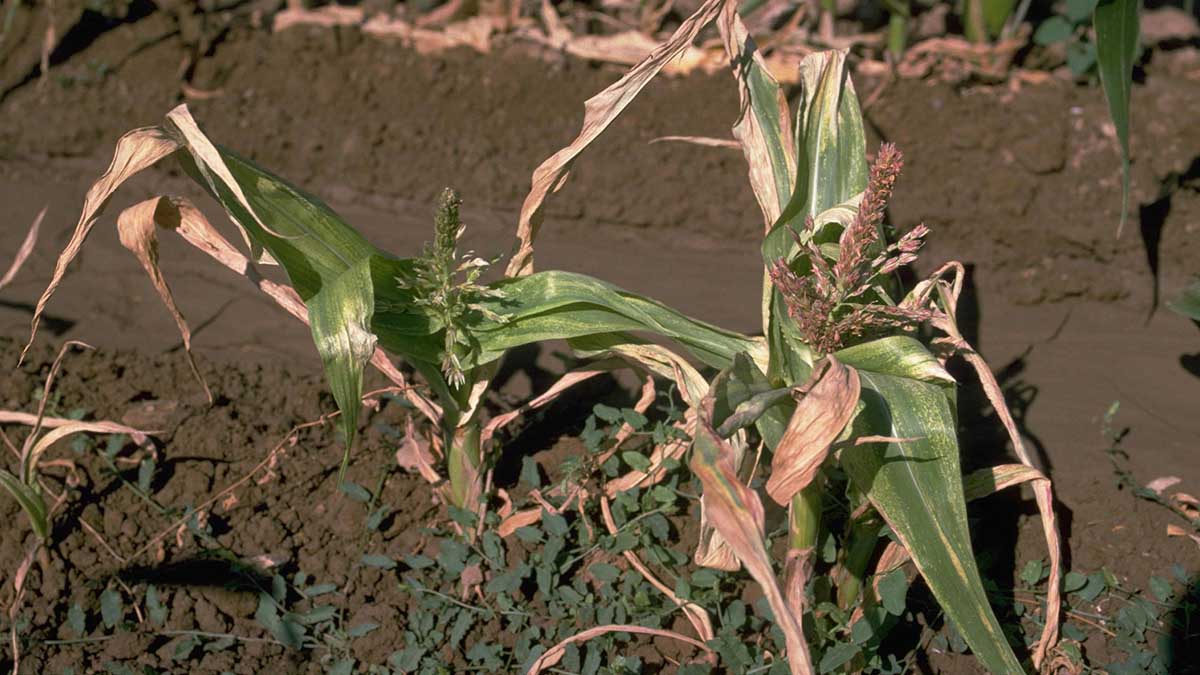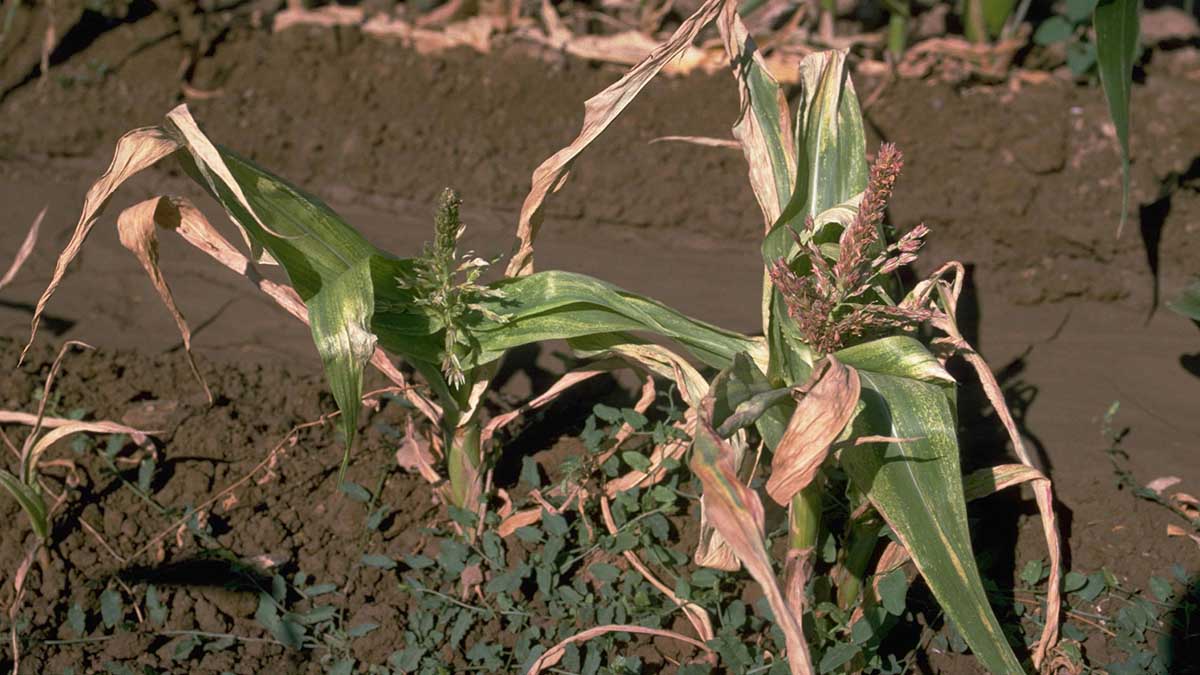HPV
Pest Common Name
- Disease name — High Plains disease
- Disease pathogen — High Plains wheat mosaic virus (HPWMoV)
- Corn, wheat, barley, oat, rye, triticale and grasses such as orchard grass, Johnson grass, ryegrass, yellow foxtail and foxtail barley
HPWMoV has been reported in several countries, including Argentina, Australia, Canada, Ukraine and the USA.
Biology
HPWMoV is part of the Emaravirus genus in the Fimoviridae family. It has a segmented, single-stranded, negative-sense RNA genome with eight segments, each encoding a specific protein. The virus is primarily transmitted by the wheat curl mite (Aceria tosichella), and there is some evidence of low-rate transmission through corn seeds.
Symptoms
The symptoms of HPWMoV infection can differ based on the corn variety, growth stage, environmental conditions and presence of other viruses. Common symptoms include yellow spots and streaks on leaf veins, purpling of leaf edges and underdeveloped ears. Infected plants often exhibit severe yellowing, tissue death, and dieback of leaves and stems, typically resulting in plant death if infection occurs early in the season. The ears may be entirely aborted or lack kernels. HPWMoV tends to cause more severe symptoms in corn compared to wheat.
Damage
HPWMoV can cause substantial yield losses. In severe cases, yield reductions can be significant, impacting the overall productivity of affected fields. The virus can deteriorate the quality of the harvested grain, affecting its market value.

Management
To manage HPWMoV, clear vegetation that could harbor viruses or mites using herbicides, tillage or crop rotation before planting corn or before mites become active. Plant corn later to avoid peak mite activity and virus transmission, but not too late to avoid early vegetative stages when mite movement from wheat is high. Also, avoid planting winter wheat next to late-maturing corn or in areas with high wheat curl mite infestation. Using chemicals to control the vector isn’t cost-effective, and there are currently no resistant sweet corn varieties available.
References
- Cumagun, C.J.R., Nischwitz, C., Falcon-Brindis, A., and Woodhall, J.W. High Plains Wheat Mosaic Virus in Sweet Corn Seed Crops in Idaho. University of Idaho Extension Bulletin (accepted).
- Munkvold, G.P. and White, D.G. 2016.Compendium of Corn Diseases, 4th Edition. St. Paul, Minnesota, APS Press.
- Tatineni, S. and Hein, G.L. 2021 High Plains wheat mosaic virus: An enigmatic disease of wheat and corn causing the High Plains disease. Mol Plant Pathol. 22:1167-1179.
Pesticide Warning
Always read and follow the instructions printed on the pesticide label. The pesticide recommendations in this University of Idaho webpage do not substitute for instructions on the label. Pesticide laws and labels change frequently and may have changed since this publication was written. Some pesticides may have been withdrawn or had certain uses prohibited. Use pesticides with care. Do not use a pesticide unless the specific plant, animal or other application site is specifically listed on the label. Store pesticides in their original containers and keep them out of the reach of children, pets and livestock.
Trade Names — To simplify information, trade names have been used. No endorsement of named products is intended nor is criticism implied of similar products not mentioned.
Groundwater — To protect groundwater, when there is a choice of pesticides, the applicator should use the product least likely to leach.
- Howard F. Schwartz, Colorado State University, Bugwood.org
Christian Cumagun, Plant Pathologist
James Woodhall, Plant Pathologist, Associate Professor and Extension Specialist
2025







